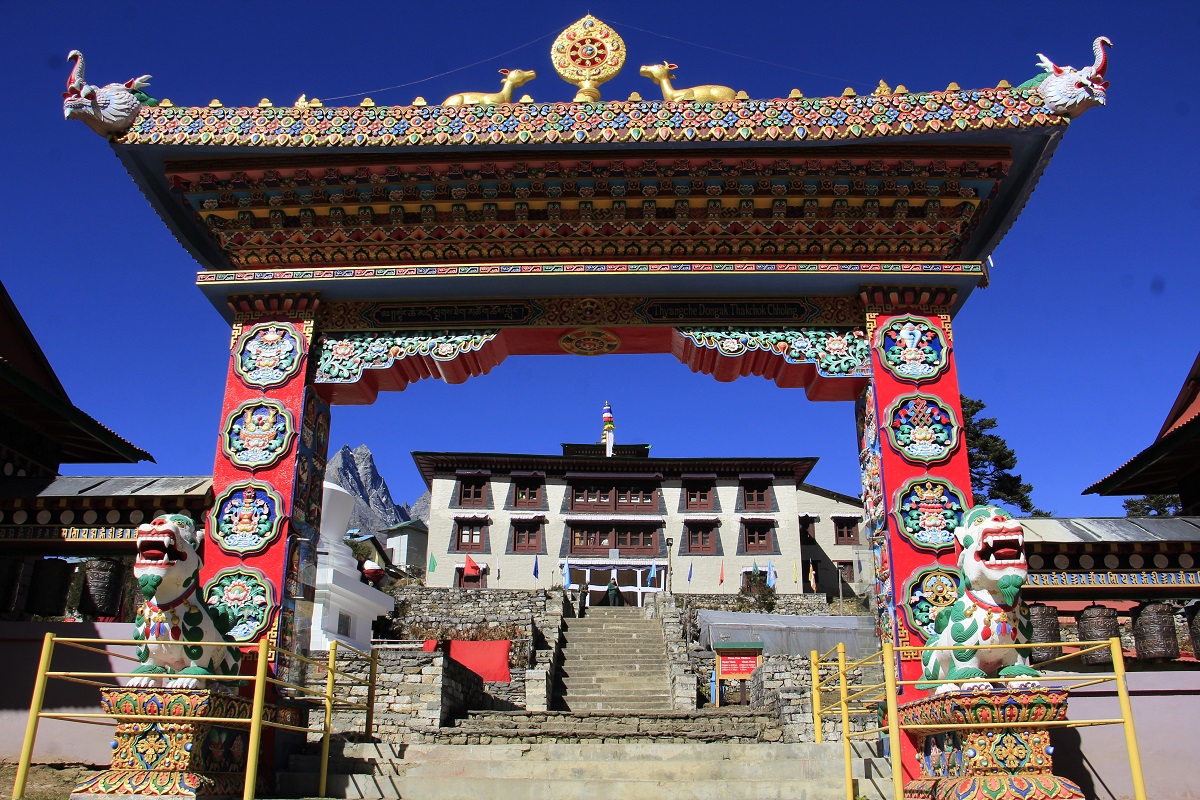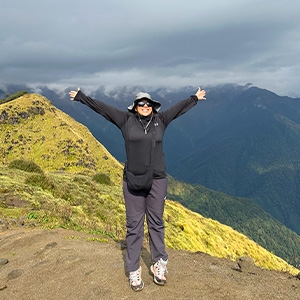Phakding Monastery
In clear weather, Phakding monastery overlooks Thamserku, part of Kusum Kanguru, and Tawache. Everest may be visible from higher along the ridge. This Nyingma-pa monastery is very active. From what we can see, there are about 20 nuns and monks living there and performing puja, generally in the mornings. In the main structure, Guru Rinpoche wields his skull-and-vase mace, the Vajra/Dorje. These two female deities, who are called Yeshe Tsogyal and Mandarava in Nepal, are his wives. In even scarier visions, they stand on either side of him. The white devil on the right has a terrifying jaw and eyes. Both are Dorje Tapu. Sakyamuni Buddha and Chenresig are displayed. If the monks let you upstairs, you'll find prayer books and Mi Tsering's mask. The courtyard hosts several events, like Dumje puja. This revives Sherpa customs and festivities. The courtyard has beautiful vintage. We viewed silk and wood-painted panels that partially exposed the elements when we visited. These showed Tsong Khapa, who started the Gelug-pa sect led by the Dalai Lama, Sakyamuni Buddha, and a very interesting Yab-Yum figure. The Nyingma-Yab-Yum Pa's figure depicts the Buddha and his consort embracing.
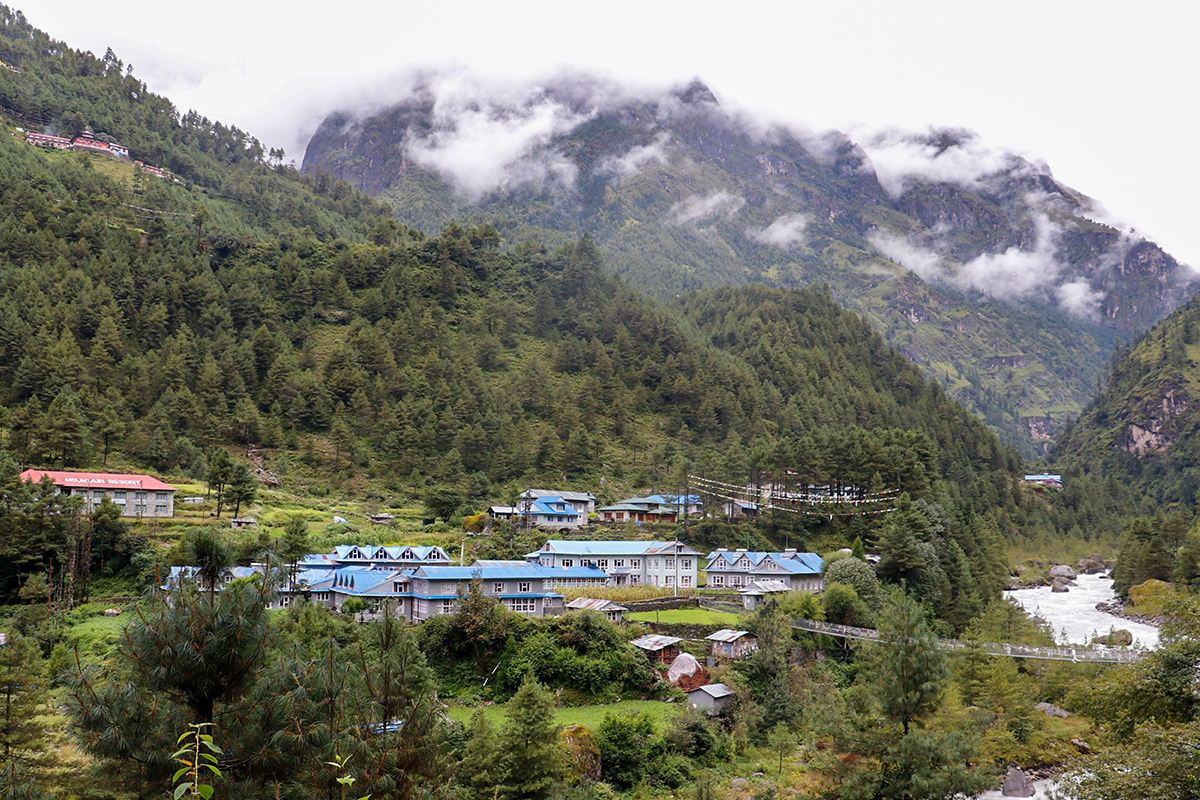
This scary Yab-yum shows three nasty young demons standing on corpses and holding hands with their mate. The monks and nuns were cooking and eating their traditional meal of tsampa balls and butter tea.
Namche Monastery
Namche Bazaar is the main trading city and entry point to the upper Khumbu Region. It has a small gompa that people think is about 300 years old and is used for different ceremonies. The interior of the shrine, just like the rest of the monastery, is beautifully painted and decorated with representations of a variety of gods. The monastery fell into disrepair, which is a shame. To help fix it, a fund has been set up to accept donations from both people in the area and people from farther away.
It is recommended that you pay a visit to the little gompa (monastery) that is perched high on the northern edge of the Namche Bowl. This Nyingma-pa monastery is home to a beautiful new golden figure of Chenresig, also known as Avalokiteshvara in Nepal. Chenresig is a Tibetan bodhisattva, which translates to "Buddha disciple" or "great teacher." A big image of Guru Rinpoche can be found on the bottom level, along with an image of Sakyamuni Buddha, the earthly Buddha who was born in Nepal, and two Taras, who are feminine deities associated with the Buddha. There are two enormous prayer wheel chambers in this area, which are interesting to check out.
In the first house, Guru Rinpoche lives with eight of his other forms and all 21 Taras. Lodan Choged, Shakya Sengge, Padmasambhava, Sengge Dragtog, Dorje Drolod (Droll), the fiery one, Tsoke Dorje in Yab-yum, Padma Gyalpo, and Nima Odzer are the eight images. Lodan Choged is the central figure. The second room contains dozens upon dozens of Buddha statues.
Khumjung Monastery
The Khumjung monastery is also worth a visit because it has the only yeti scalp left after the one at the Pangboche monastery ran away. Most of the time, the person who has the keys can be found, and donations are gratefully accepted. The primary hall houses a number of gods and goddesses. Once more, Guru Rinpoche and his consorts take the spotlight off the spotlight. The guardian identified them as Re Pa-Meh, the small red vision on the right, and Chowo Yeshe Norbu on the left. Here they are. The Golden Jawa Changba is located more to the right, and the White Chenrezig is located further to the left. The Yeti Scalp can be found concealed within the metal box.
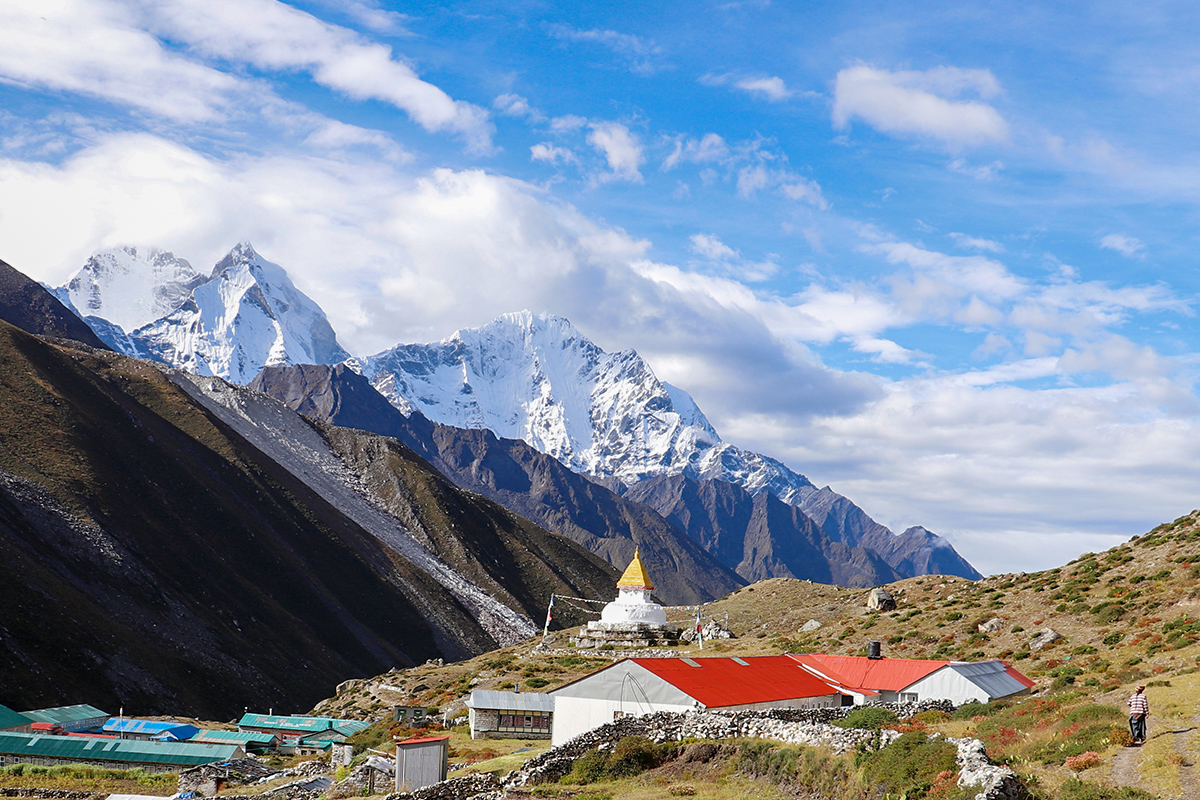
Approximately 340 years ago, the settlement of Khumjung was formed at the base of the holy peak of Khumbila. The monastery was founded in this village, and it is here that the Yeti's skull, also known as the abominable snowman, is preserved and displayed. The Mountain Institute gave money to help fix up the Gompa kitchen, fix up the Maniwall, and make cloth bags for festivals.
Thame Monastery
The Thame Gompa Monastery is even higher up the mountain, so it takes an extra thirty to forty-five minutes to get there. Again, the best time to visit the monastery is in the morning, when the vistas are typically at their best, and after one has spent an additional night at the higher elevation one is better able to acclimate. This monastery has a history dating back more than 300 years and was founded by Lama Sangwa Dorje.
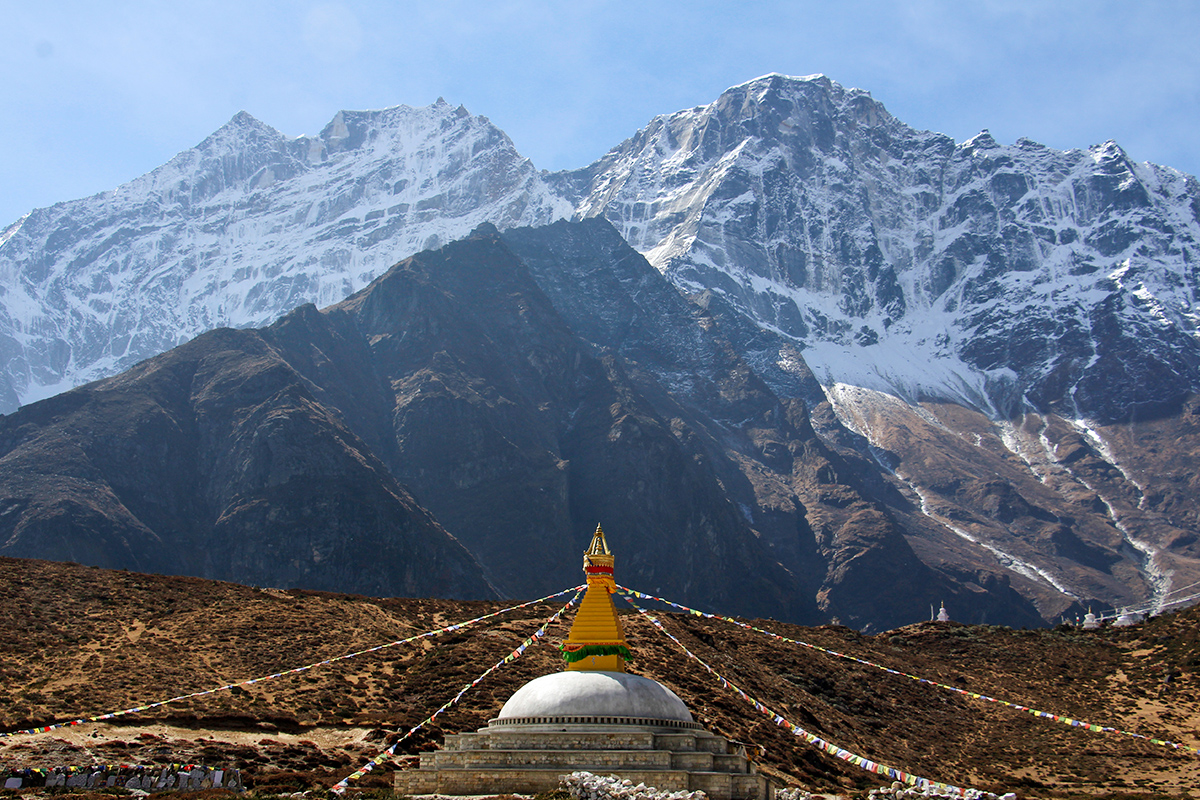
After an earthquake, the Nyingma-pa monastery had to be completely rebuilt. It now has a large courtyard with a solar kettle dish. The picture shows, of course, the four guardians, as well as a circle of life and the harmonic buddies sitting on top of an elephant. Along with the two scary guardians, who are shown as a fiery Tamdrin (Hayagriva) and a dark Channa Dorje, there is a big wheel called Vajrapani that is used to send prayers to the heavens. Surprisingly empty on the inside, but packed to the gills with books is what you'll find there. There is no obscurity in Buddha, Chenrezig, or Guru Rinpoche. You can also find a picture of the revered lama Trulsik Rinpoche here. He is the abbot of the Thubten Choling monastery, which is high above Junbesi. There are as many as thirty-five monks living in this location. There are a few very new lodges in this area, as well as some steep steps; use caution. The month of May is reserved for the Thame Mani Rimdu festival.
Khunde Monastery
Khunde Monastery, nestled within the breathtaking landscapes of the Khumbu region in Nepal, stands as a cultural and spiritual jewel at an altitude of approximately 3,840 meters. This monastery, also regarded as important to the Sherpa community, is a testament to the enduring traditions and rich religious heritage of the region. While precise details about the monastery may vary, it likely features traditional Sherpa architecture adorned with vibrant prayer flags that flutter in the mountain breeze.
Established among the towering peaks, Khunde Monastery serves as a Buddhist sacred site in Everest Region for the Sherpa people to practice and preserve their Buddhist traditions. The monastery's interior is likely to house intricate religious artifacts, ancient manuscripts, and vivid murals depicting Buddhist teachings. Pilgrims and visitors are greeted by the soothing ambiance of prayer chants and the fragrant aroma of burning juniper incense, creating an immersive experience that resonates with the spiritual essence of the Himalayas.
Surrounded by the panoramic views of snow-capped peaks, including the majestic Ama Dablam and the towering Everest, Khunde Monastery offers a serene backdrop for meditation and reflection. The peaceful courtyards and prayer halls become sanctuaries for those seeking solace amidst the grandeur of the Himalayas.
Tengboche Monastery Nepal
Tengboche Monastery, also known as Dawa Choling Gompa, stands as the most influential and largest monastery in the Khumbu region of Nepal. Perched majestically at an altitude of 3,867 meters, this is the Highest Monastery in Nepal and is a spiritual and cultural centerpiece amidst the towering peaks of the Himalayas. Tengboche Monastery holds a position of immense reverence, hosting the annual Mani Rimdu festival, a grand celebration that draws pilgrims and trekkers alike. The monastery's architectural grandeur and serene surroundings make it a vital destination on the Everest Base Camp trek, offering not only breathtaking views of Everest and neighboring peaks but also a profound connection to Sherpa culture and Buddhist traditions. In the heart of the Khumbu region, Tengboche Monastery serves as a spiritual beacon, embodying the rich heritage and enduring spirituality of the Sherpa people amid the awe-inspiring landscapes of the Himalayas.
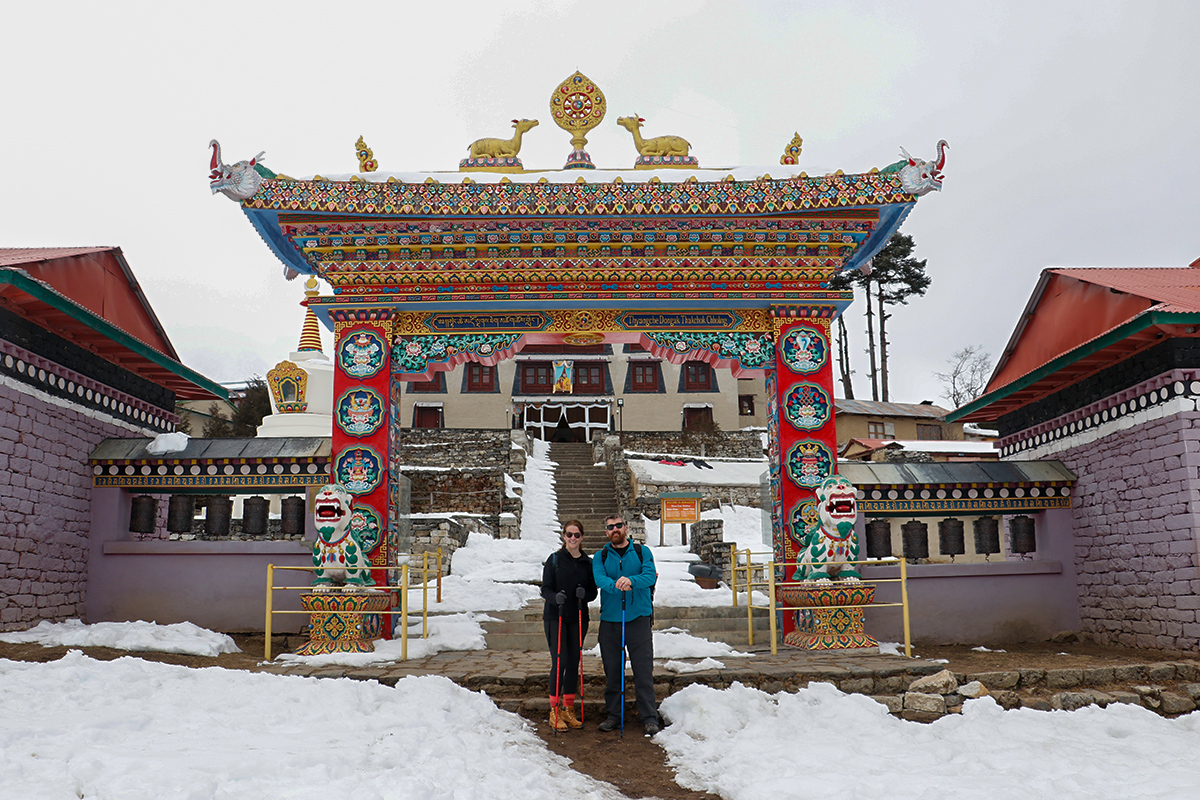
Tengboche was one of the first Monasteries in the Everest Region of Nepal built. It was started in 1916, and it took three years to build. This monastery was founded by Chatang Chotar, who is more often known as Lama Gulu. The Tengboche Monastery is connected to the Rongbuk Monastery, which is located close to the Tibetan side of the Everest Base Camp.
The monastery was damaged by an earthquake in 1934, and Lama Gulu passed away shortly afterward. In 1989, a terrible fire broke out, and as a result, the whole monastery burned down, along with many of its most valuable items. The new monastery was painstakingly reconstructed over time and was finally finished. It was on the same day in 1935 that the current Rinpoche, Ngawang Tenzin Jangpo, as well as the Dalai Lama, were both born. Following a trip to the Rongbuk monastery on the part of his family, it was determined that he was, in fact, the reincarnation of Lama Gulu.
Located in the Sagarmatha National Park, the Tengboche monastery is also a UNESCO World Heritage Site "of universal importance." From here, you can get to see the entire Himalayan range, including the famous peaks of Everest, Ama Dablam, Thamserku, Takhe, Nuptse, and Lhotse.
Tengboche Monastery is the place where the "Sacred Sites Trail Project" of Sagarmatha National Park comes to an end. This project is one of the primary draws for visitors who are interested in mountaineering and trekking in the park. It is a trail that goes around in a clockwise direction and stops at ten different monasteries before ending at the Tengboche Monastery.
Pangboche Monastery
Pangboche, situated at 3900 m, is the last permanent village, also regarded as one of the Religious places in Everest Region. The Pangboche Monastery is 350 years old and is the oldest monastery in the Khumbu Region. It was built by Lama Sangwa Dorjee. When the Yeti skull was stolen, it took away the Gompa's main source of income. The so-called yeti scalp was once kept in the storage area of the Pangboche monastery. However, it has been missing for the past few years. Up to 20 monks call this place of worship home, and it holds the distinction of being the oldest monastery in the Khumbu region.
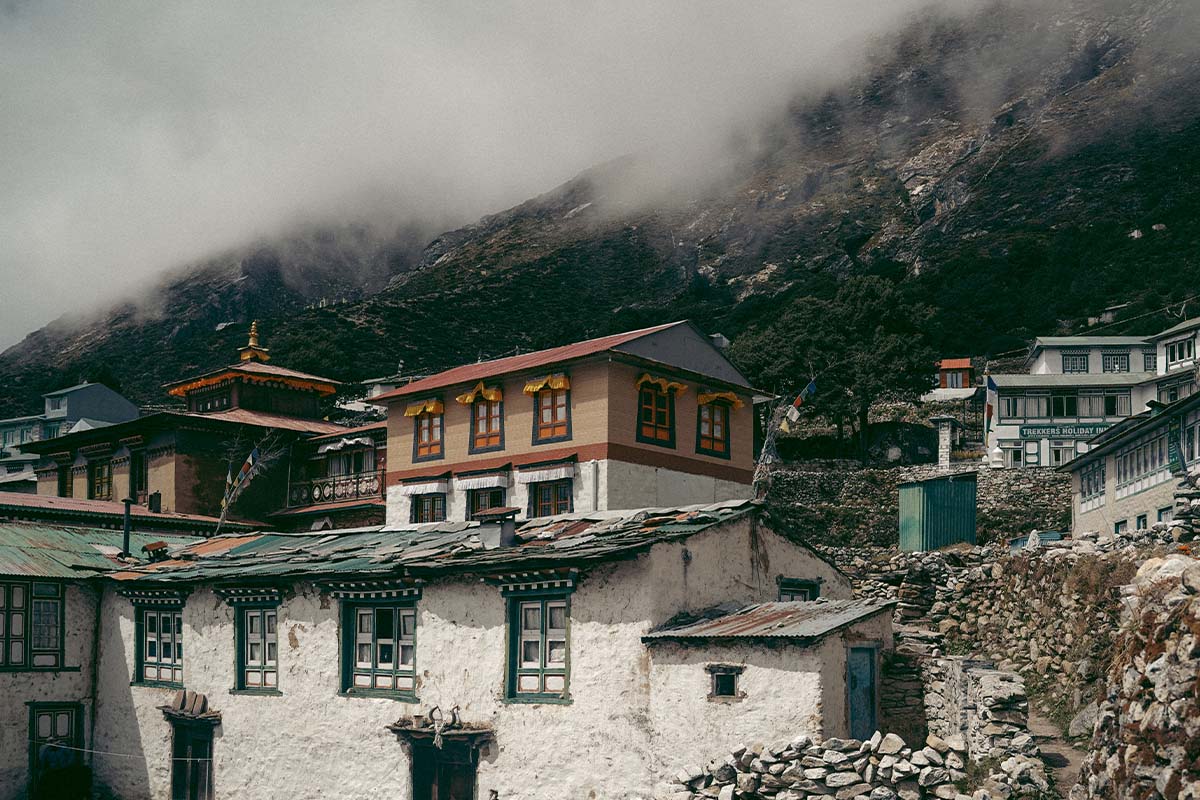
Once again, we come face to face with Guru Rinpoche and his consorts inside. Paintings depicting the eight auspicious signs and the four primary guardian deities may be found on the outside of the building, one on either side of each door.


